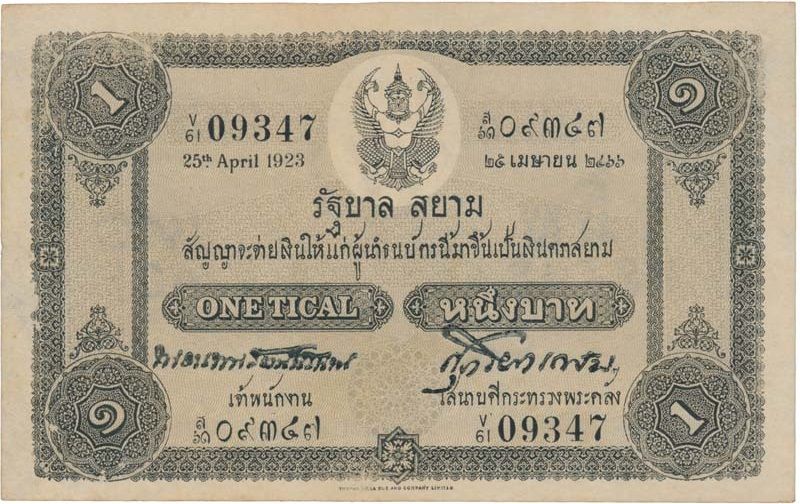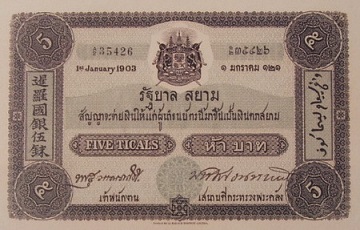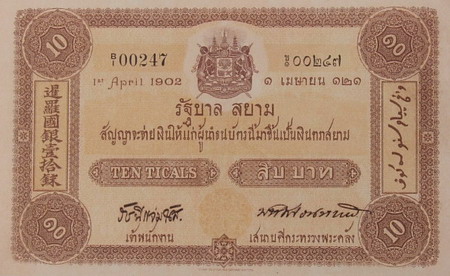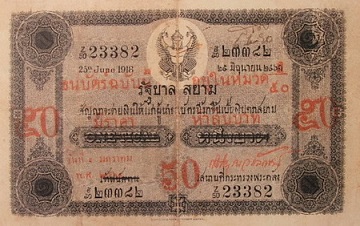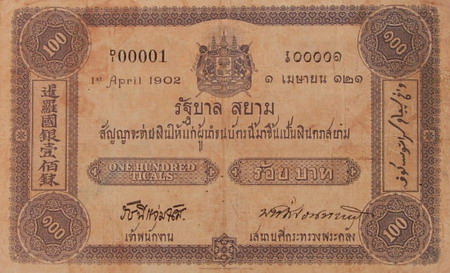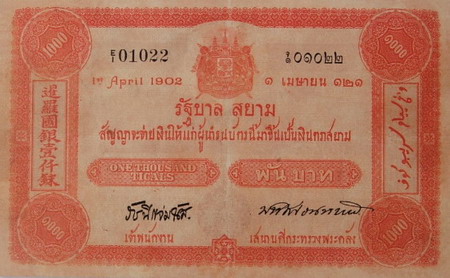A History of Thai Banknotes: Series 1
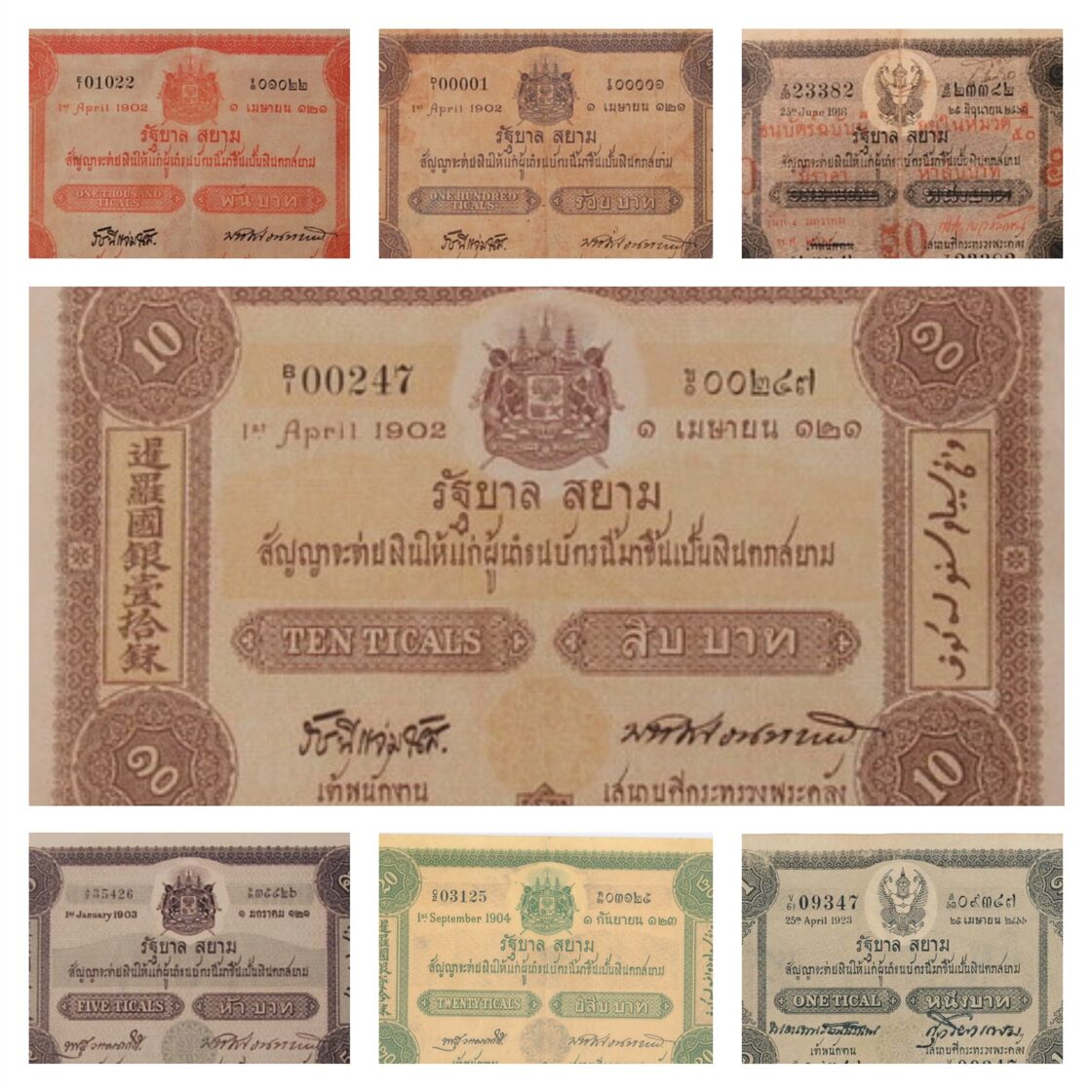
This is the first installment of our blogs concerning Thai Banknotes where we go over their series of designs and discuss their history, but also commenting on their features and ranking them, from the very first series printed in 1902 to the current one we're all using now. Today we'll start with Series 1 of course.
Series 1 is the rarest and most valuable to collect. The 1 Baht notes are the most abundant out of this series. To think how much 1 Baht could even buy you in 1902, maybe a good bottle of liquor?
It all started in the year 1900, when Mr. Charles James Rivett Carnac, an advisor to the Royal Treasury Ministry, proposed to the government the issuance of banknotes while maintaining the role of India's currency in accordance with the British currency standard. Subsequently, the Thai government reached out to Mr. W.J.F. Williamson, a British official from the Indian Ministry of Finance, to examine and establish the necessary currency regulations.
The establishment of the Banknote Department and the promulgation of the Currency Acts occurred in 1902. Mr. W.J.F. Williamson advocated for the printing of new banknotes rather than utilizing the remaining Ngern Kradat Luang (treasury notes) in circulation, as their multi-colored designs made it challenging to distinguish between different denominations.
Williamson corresponded with the Bank of England, requesting that Thai banknotes be printed there. However, the Bank of England declined the request, stating that it only printed currency for India, which was under British control at the time. Nevertheless, the Bank of England recommended that Thomas de la Rue & Company Limited (which went on to print Banknotes for the 2nd, 3rd, 4th, 9th and 10th series), a British firm, assume responsibility for the printing of banknotes for Thailand.
The design was exclusively printed on one side, leading to the designation of the note as a "Uniface Banknote." There were seven denominations: 1, 5, 10, 20, 50, 100, and 1000 baht. Each denomination featured various types that were produced by Thomas De La Rue & Company Limited, based in England. The release of these notes was officially declared on September the 7th of 1902, during the reign of King Rama V (a late to write this for its 122nd anniversary).
The Banknotes' design each contained their denomination in four corners, the Siamese coat of arms (later replaced with the Garuda, a mythical bird creature and one of the symbols of Thailand), Chinese text on the left box and Jawi (the Malay Arabic writing system) text on the right, although they are absent from the design of the 1 Baht notes as they were printed later in 1918 up until 1924, due to a lack of silver 1 Baht coins in circulation after World War I.
Personally I think the design leaves a lot to be desired, but I can't be too harsh since it is the first of the Thai Banknotes. There are watermarks displaying 'Goverment of Siam' in Thai and English, and the three-headed elephant, another symbol of Siam that's displayed on the old coat of arms, so at least the security features stand for its time. I would've appreciated more contrast in the choice of colours used for each denomination. There have been minor varieties in design for each denomination, except 1 Baht, but we won't go over them due to reasons above.
One interesting thing about the design is that the baht seems to be referred in English as the Tical. The Tical is the old Western term for Baht, which was popularised by Portuguese traders. It is also the currency of Cambodia before French Colonisation and remains in widespread use in Myanmar and Thailand in terms of gold (A Tical is equivalent to 16.33 grams for bullion in Myanmar and 15.244 grams in Thailand, 15.16 applies only to jewellery). The word Tical likely derives from Khmer or Mon, some Thai units of mass in gold, which were also denominations of currency in Siam and Thailand before decimalisation also derive from Khmer, such as Tamleaung (4 baht) and Hap (1000 Tamleaung), even though those terms are rare in use nowadays.
My ranking for this series is, 5.5/10, out of all the series and major varieties, this one stands at 21, the lowest.
